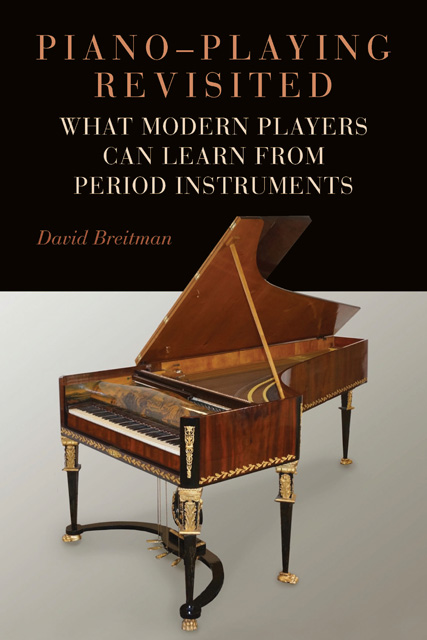Book contents
- Frontmatter
- Dedication
- Contents
- List of Illustrations
- Preface
- Acknowledgments
- 1 Music Making Then and Now
- 2 With Broad Strokes (An Overview)
- 3 The Early Days of the Piano: Haydn and Mozart
- 4 Beethoven and the Evolving Piano
- 5 Schubert
- 6 Chopin
- 7 The Clavichord
- Epilogue: Creativity in the Performance of Old Music
- Appendix: Overtone Structure of the Steinway and Walter, Compared
- Glossary of Terms
- Notes
- Bibliography
- Index of Works
- General Index
2 - With Broad Strokes (An Overview)
Published online by Cambridge University Press: 17 January 2023
- Frontmatter
- Dedication
- Contents
- List of Illustrations
- Preface
- Acknowledgments
- 1 Music Making Then and Now
- 2 With Broad Strokes (An Overview)
- 3 The Early Days of the Piano: Haydn and Mozart
- 4 Beethoven and the Evolving Piano
- 5 Schubert
- 6 Chopin
- 7 The Clavichord
- Epilogue: Creativity in the Performance of Old Music
- Appendix: Overtone Structure of the Steinway and Walter, Compared
- Glossary of Terms
- Notes
- Bibliography
- Index of Works
- General Index
Summary
like to say that music prior to 1800 speaks, while subsequent music paints. The former must be understood, since anything that is spoken presupposes understanding. The latter affects us by means of moods which need not be understood, because they should be felt.
—Nikolaus HarnoncourtThe modern piano is especially good at painting, while the older instruments, especially those from before 1800, excel at speaking. The modern one evokes strong feelings with long melodic lines and grand dynamic contrasts; early pianos focus the ear on details like the beginnings and endings of sounds, the spaces between them, and the precise calibration of emphasis—the very same attributes that make speech understandable and compelling.
This attention to detail makes the older instruments demanding taskmasters. They require focus on the micro level: the dynamic shape of an ornament, the exact length of individual notes, or the careful articulation of a series of short slurs. I often say, “the good thing about the fortepiano is that you can hear everything; the bad thing is that you can hear everything!” At the modern piano, it’s tempting to adopt a big-picture view and favor the principal voice, overlooking nuances of dynamics and articulation as well as details in the accompanying parts.
Cultivating a “speaking” style can counterbalance habits developed in response to the modern piano and the Romantic repertory. Harnoncourt draws a line at 1800, but I see a more gradual transition, with plenty of “speaking” in Beethoven and even in Chopin, although the qualities of “painting” gradually predominate. Ultimately, this meticulous work is beneficial for performance on any instrument, and is applicable to a wide range of repertoire.
Learning from Old Instruments
Playing an instrument is a two-way street. We ask things of our instruments, and they respond—but not always in the way we expect. Their effect on us is immediate, and they begin teaching us the moment we touch them. The old instruments have a lot to offer, and while some of their lessons are immediately apparent, others come only with long and patient study. Here, in broad strokes, are the observations that will be fleshed out with specific musical examples in subsequent chapters. (Some of the features listed here are demonstrated on the website, https://vimeo.com/showcase/8046349.)
- Type
- Chapter
- Information
- Piano-Playing RevisitedWhat Modern Players Can Learn from Period Instruments, pp. 8 - 23Publisher: Boydell & BrewerPrint publication year: 2021



